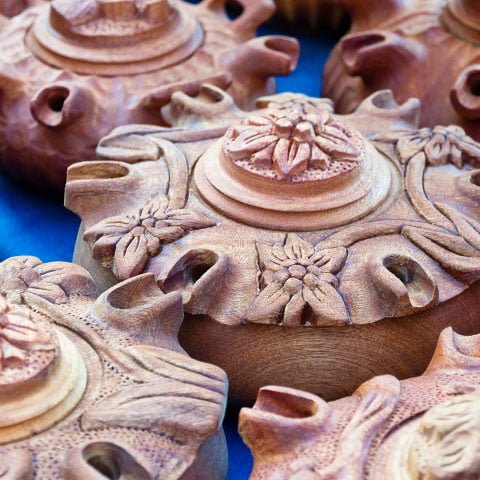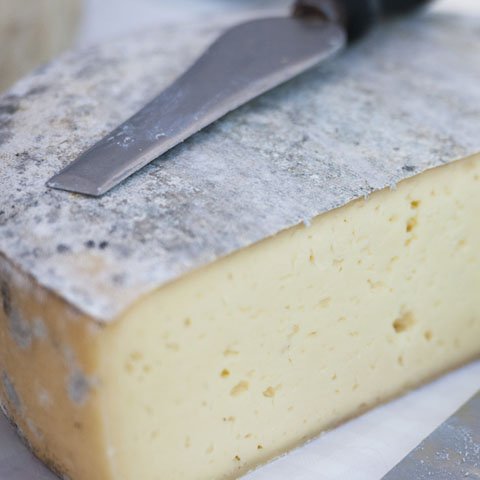Aosta Valley – Food and Wine
The cuisine of the Aosta Valley is best described as rustic, hearty, filling, and flavorful. With centuries of tradition influencing the local recipes, travelers can taste the regional culture in every dish. Food in the Aosta Valley is simple and traditional, influenced by both Northern Italian cuisine and the mountain cuisines of France and Switzerland. Recipes are flavored with local ingredients such as starches and rich dairy to create hearty dishes that are perfect for warming up during the region’s cold winters.
Regional products include honey, bread, cured meats, and produce such as cabbage, grapes, apples, pears, and garlic. Also famous from the Aosta Valley are cheeses such as toma and fontina – both of which are commonly found in local specialties throughout every course.
As with other regions throughout Italy, the appetizer course (antipasto) in the Aosta Valley can consist of small bites of local cheeses and meats. A traditional antipasto of the region consists of country bread that has been rubbed with garlic, topped with fontina cheese and anchovies, and toasted until the cheese is bubbly.
As for antipasto meats, the region is known for its local salame and famous prosciutto called Jambon de Bosses – spicy cured ham made from free-range pigs. Salted pork is also common. Fontina is the most important and traditional cheese of the Aosta Valley. Well-known throughout the region, it is used in nearly every course from appetizers to dessert. A rich cheese with a distinct flavor, it is created from cow’s milk and partially cooked. It has become a symbol of the region and a staple ingredient of many of the area’s most famous dishes. It is often served alone during the appetizer course or mixed into Fonduta Valdostana – a fondue of melted cheese that is served with crusty bread.
Unlike most of Italy, pasta is not a main staple in the Aosta Valley region. Instead, locals rely on hearty cuisine made of starches like potatoes, rice, and polenta.
Soups and stews are extremely popular for providing sustenance during cold winters. Made with local meats, vegetables, and herbs, traditional soups of the region are thickened with cream and cheese from local cows. One of the traditional soups of the region, zuppa alla valdostana, is made with savoy cabbage, topped with fontina cheese, and served with stale bread.
Risotto alla valdostana is a popular first-course dish. It is made with local cheese, namely fontina or toma, in addition to the rice, and cooked low and slow to create a rich, creamy risotto. Other popular starchy options include polenta, gnocchi alla bava (gnocchi with fontina or toma), and rice dishes, such as rice with chestnuts and milk.
Traditionally, the second course in Italy is the meat course. Throughout Aosta, the mountainside meadows serve as the ideal place for herds of cattle to graze. As a result, beef is a common ingredient in second course dishes. Other meats used throughout the region are veal, pork, wild hare, venison, and game birds.
One of the most famous meat dishes of the area is carbonada or carbonade – a type of beef stew that originated in Belgium and can be found throughout the Western Alps as well as southeast France. Made with salt-preserved beef, onions, and red wine, in Valle D’Aosta carbonada is typically served with polenta. Another delicious local specialty is a type of venison stew, called capriolo alla valdostana, that is created by stewing venison and vegetables in an herb-flavored cream sauce made with grappa.
Stews are the perfect way to maximize flavor out of unusual cuts of meat. The culture of preparing meat in the Aosta Valley is rooted in not wasting anything. Unusual parts of the animal are utilized to create other unique dishes as well, such as salt-cured cow’s udder and boudin sausages made from pork blood.
In addition to stews, travelers can enjoy delicious meat dishes such as costolette alla valdostana – breaded and fried veal cutlets that are stuffed with fontina cheese – and Involtini di Fénis – rolled veal that is stuffed with motsetta (a local type of cured meat with ancient origins) and fontina. Another meat to try in the Aosta Valley is Lardo di Arnad – pork fatback that is cured and brined with herbs and spices.
Though seafood is not a main staple of the Aosta Valley diet, fish such as mountain stream trout is served as a special treat. A traditional way to prepare trout in this region is to sauté the fish in butter and herbs and serve it with in-season vegetables.
A common side dish throughout the Aosta Valley is polenta concia. This traditional polenta is made with alternating layers of sliced polenta and fontina cheese topped with melted butter.
After dinner in the Aosta Valley, visitors can enjoy desserts made with locally grown fruit such as apples or pears, shortbread cookies made with almonds, Mont Blanc style ice cream, and a variety of other traditional treats worth saving room for.
One of the region’s most traditional desserts are its tegole biscuits. Made from hazelnuts, almonds, and vanilla, these sweet cookies are a must-try in Aosta. A delicious dessert often served with tegole is crema di cogne – a mixture of cream, vanilla, egg yolks, sugar, dark chocolate, and rum that is cooked until thick and served as a dipping cream for the biscuits. Another type of local cookie is known as torcetti, a ring-shaped dessert made with butter and flavored with sugar and honey.
To finish off your meal, be sure to taste caffè alla valdostana, local coffee made with sugar, grappa, lemon zest, and orange zest, that is traditionally served in the coppa dell’amicizia, a large wooden receptacle with multiple spouts that were traditionally used to share the coffee. Caffè alla valdostana can also be served in a grolla, a wooden chalice that is taller and thinner compared to the coppa dell’amicizia.
While one may presume that the Aosta Valley’s mountainous geography and cold temperatures would make it hard to grow the grapes necessary to produce wine, the region actually has a unique micro-climate which allows winemakers to grow vineyards at high altitudes. The result is a wide variety of local wines that are sure to please any wine connoisseur. In fact, there are over 20 wines produced exclusively in the Aosta Valley.
Lovers of red wine will certainly want to try Donnas, Fumin, and the local Pinot Noir. If you’d rather have white, the Blanc de Morgex et de La Salle is the area’s most exceptional variety. The winery that creates this wine was founded by a group of 100 locals, and the grapes are grown at the foot of Mont Blanc – a staggering 3,280 feet high in altitude. In addition, the Aosta Valley produces great Chardonnay and Moscato whites.
Any wine lover visiting Aosta should take a trip down the Valle d’Aosta Route des Vins – the Aosta Valley Wine Trail. This route runs through various vineyards at which wine lovers can explore the mountain growers’ traditions and learn about the history and passion of alpine winemaking.


